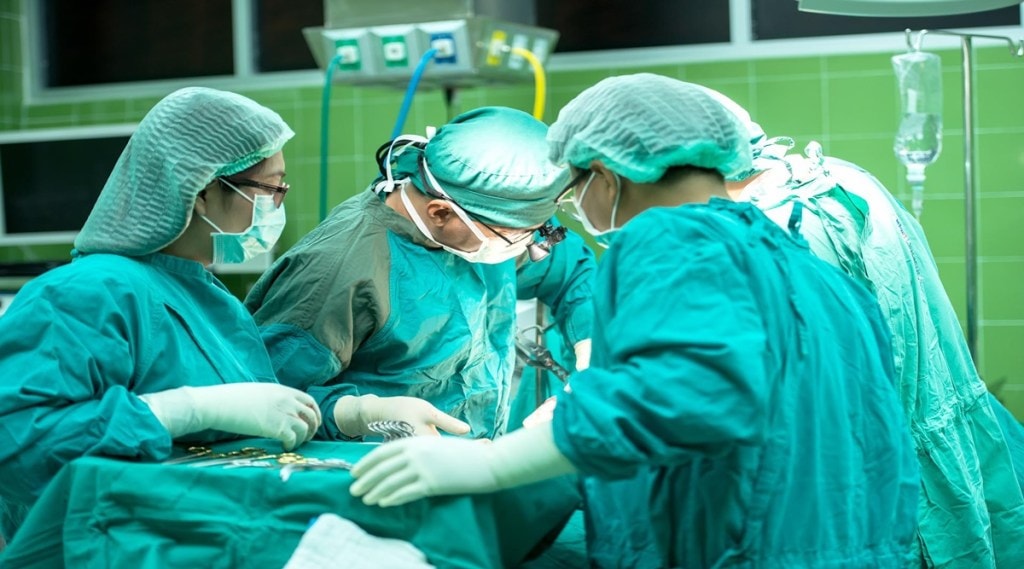By Shreyas Patil, Madhurima Vuddemarry, and Siddhesh Zadey
The advent of anesthesia 200 years ago heralded the emergence of surgery as an essential component of medicine. Before this, labor complications meant death and cataracts meant blindness. In spite of continued innovation and development, 3.2% of all preventable deaths in low- and middle-income countries (LMICs) occur due to surgically avertable conditions. In other words, if surgical care is scaled up and delivered, over 1.4 million deaths can be prevented every year in LMICs. However, it’s important to go beyond deaths and consider the disease burden, i.e., mortality and morbidity taken together measured by disability-adjusted life years (DALYs). About 11% of the global burden of diseases or 116 million avertable DALYs can be averted by financing emergency and essential surgery in LMICs. So what is the reason behind the mortality burden of surgically treatable diseases? A major reason is the lack of access to surgical care for those in need.
Surgical care access can be thought of as a product of multiple factors. Four are commonly considered: timeliness, surgical capacity, safety, and affordability. About 4.8 billion people globally lack access to surgical care based on these factors. Additionally, there are wide disparities in access to surgery. About 97.7% of people in LICs and 92.3% of the people in LMICs lack access to surgical care services as opposed to 14.9% of people in HICs. India, an LMIC is no different, 90% of the rural population is estimated to lack access to surgical care facilities. The major causes of this inaccessibility are a lack of infrastructure and human resources.
Among others, scaling up surgical care would need an increasing workforce trained in surgery, obstetrics, and applied aspects such as anesthesia and laboratory sciences, including blood transfusions. An adequate surgical care workforce has been found to ensure good population health outcomes. Research associated with the Lancet Commission on Global Surgery (LCoGS) has reported that having 20-40 surgery, anesthesia, and obstetric (SAO) specialists per 100,000 people was associated with a lowering of maternal mortality rates. It is estimated that 2.1 million SAO specialists are needed globally to achieve the benchmark of 40 per 100,000 people by 2030. Dedicating resources towards fast-tracking and boosting surgical care workforce numbers is therefore an indispensable early step in surgical care scale-up.
There also exists a gap between the need and supply of surgical procedures, particularly in the LMICs. Regions with larger populations invariably have greater surgical needs, as seen in the South Asian region that includes India, which was home to over 1.6 billion people in 2010. The surgical need for the region was estimated to be over 72.9 million procedures annually, of which only 21% was being met. Further, it has been estimated that a mere 6.1% of the surgical needs are met in rural India. Such numbers reflect the necessity of enhancing investments in surgical care.
However, surgical care is still quite neglected and doesn’t get as much funding as it deserves. The neglect is also evident in the Indian policy discourse. Among others, one reason is the ill-perception of expensiveness. But the evidence says otherwise. There are at least four reasons why policymakers and governments should consider financing surgical care scale-up. First, interventions for essential and emergency surgical care are cost-effective. Second, scaling up surgical care is cost-beneficial. Third, ensuring affordable surgical care is a way of poverty alleviation. Fourth, not doing anything is costly due to the economic burden associated with the disease burden of surgically avertable conditions. We go over these below in some detail.
Cost-effectiveness studies typically look at disability-adjusted life-years (DALYs) averted, life-years saved (LYS), or quality-adjusted life-years (QALYs) gained due to surgical interventions. Incremental cost-effectiveness ratios (ICER) measure the change in the costs reactive to the changes in effects, which is usually done by comparing access to a surgical intervention compared to no intervention. Globally, injuries, obstetric issues, cataracts, glaucoma, cancers, perinatal conditions, congenital anomalies, and other surgically treatable conditions were estimated to have ICERs in the range of US$275-312 per DALY averted. In India, emergency obstetric care provision and safe abortion clinics had ICERs in the range of US$21-492 per life-year saved. While ICERs for cataract surgeries ranged from US$4.2 to 42.7 for every QALY gained. The World Bank notes that ICERs below US$50 are considered highly cost-effective while those falling in US$150-200 are typically considered cost-effective in LMICs. Hence, multiple emergency and essential surgeries are highly cost-effective or at least cost-effective. In fact, surgeries noted above are more cost-effective than standard interventions such as antiretroviral therapy for HIV-AIDS which has an ICER of around US$922 in LMICs.
In the cost-benefit analysis of interventions, the outcome is estimated in monetary terms. The economic benefit is calculated by multiplying the number of DALYs averted by the value of a statistical life-year (VSLY) that is country-specific. This is useful for understanding whether scaling up surgical interventions at the macro level would be economically sensible. The outcome is therefore measured as the benefits-to-cost ratio which is the ratio of the gross economic benefit of the intervention to the total cost of the intervention. In India, Operation Smile Guwahati’s Comprehensive Cleft Care Center (GCCC) estimated the cost per DALY averted for cleft lip and palate surgical repair was US$285 resulting in a benefit-to-cost ratio of 12:1. In another instance, the cost per DALY averted due to cesarean section to prevent maternal deaths due to obstructed labor was US$279 resulting in a benefit-to-cost ratio of 16.5. Cataract surgeries have also been found to be cost-beneficial in India. Hence, it is not just the cost-effectiveness of procedures at an individual level but their cost-benefits at the systemic level that make surgery worth the investment.
It is estimated that 99% of hemorrhagic peripartum deaths, 88% of trauma-related deaths, and about 90% of visual impairment occur in LMICs. The principal barrier to accessing surgical care is the cost. Surrey-seeking low-income households are particularly vulnerable to the risk of impoverishment. Globally, about 57% of people receiving surgery when they need it risk impoverishment assuming the $2 per day international poverty line. For India, at least 8% of rural and 5% of urban households risk crossing the poverty line post-surgery. Emergency surgical care costs have been estimated to amount to a significant proportion of annual household expenditure in several LMICs, especially for those in the poorest quintiles. This is further worsened by indirect costs including transportation and money spent on caregivers as well as loss of wages. A vicious cycle is thus initiated, where the poor are forced to sell assets or borrow money to fund essential surgical care, compromising their financial security. Those above the poverty line can be pushed below it while those below the line can be pushed further into poverty. Hence, financing surgical care minimizes the economic setbacks faced by the poor and should be considered among the most important mechanisms for poverty eradication in LMICs.
Diseased populations cannot contribute productively to a country’s current or future economy. Hence disease burdens are associated with economic burdens. Not financing surgery equates to a persisting economic burden. Globally, the value of lost output due to surgically avertable diseases is modeled to be US$20.7 trillion or 1.25% of potential gross domestic product (GDP) between 2015 and 2030 for 128 countries. For India, the cumulative loss was US$1.79 billion or 1.5% of the potential GDP during the 2015-30 period. Not financing surgical care scale-up will adversely impact the economy. Put otherwise, inaction has its cost. Furthermore, financing surgery is not exorbitant or impossible. For instance, for LMICs to achieve the target rate of 5000 surgeries per 100000 people noted by the Lancet Commission on Global Surgery by 2030 it would need an annual investment in the range of US$16-31 billion. For several LMICs including India, this translates to less than 10-15% of the annual health expenditures.
There are several reasons for LMICs to finance the scale-up of emergency and essential surgical care but no excuse to not do so.
(The authors, Shreyas Patil is an aspiring public health physician and a researcher at the Association for Socially Applicable Research (ASAR), India; Madhurima Vuddemarry is a researcher at the Association for Socially Applicable Research (ASAR) and a medical student at Rajarshee Chhatrapati Shahu Maharaj Government Medical College, Kolhapur; Siddhesh Zadey is a co-founding director of the non-profit think-and-do tank – Association for Socially Applicable Research (ASAR), India, a Global Surgery researcher at the Duke GEMINI Research Center US, and a doctoral student in the Department of Epidemiology, Columbia University. He serves as a Chair of the G4 Alliance SOTA Care in South Asia Working Group and a Lancet Citizens’ Commission Fellow. Views expressed are personal and do not reflect the official position or policy of the FinancialExpress.com.)







